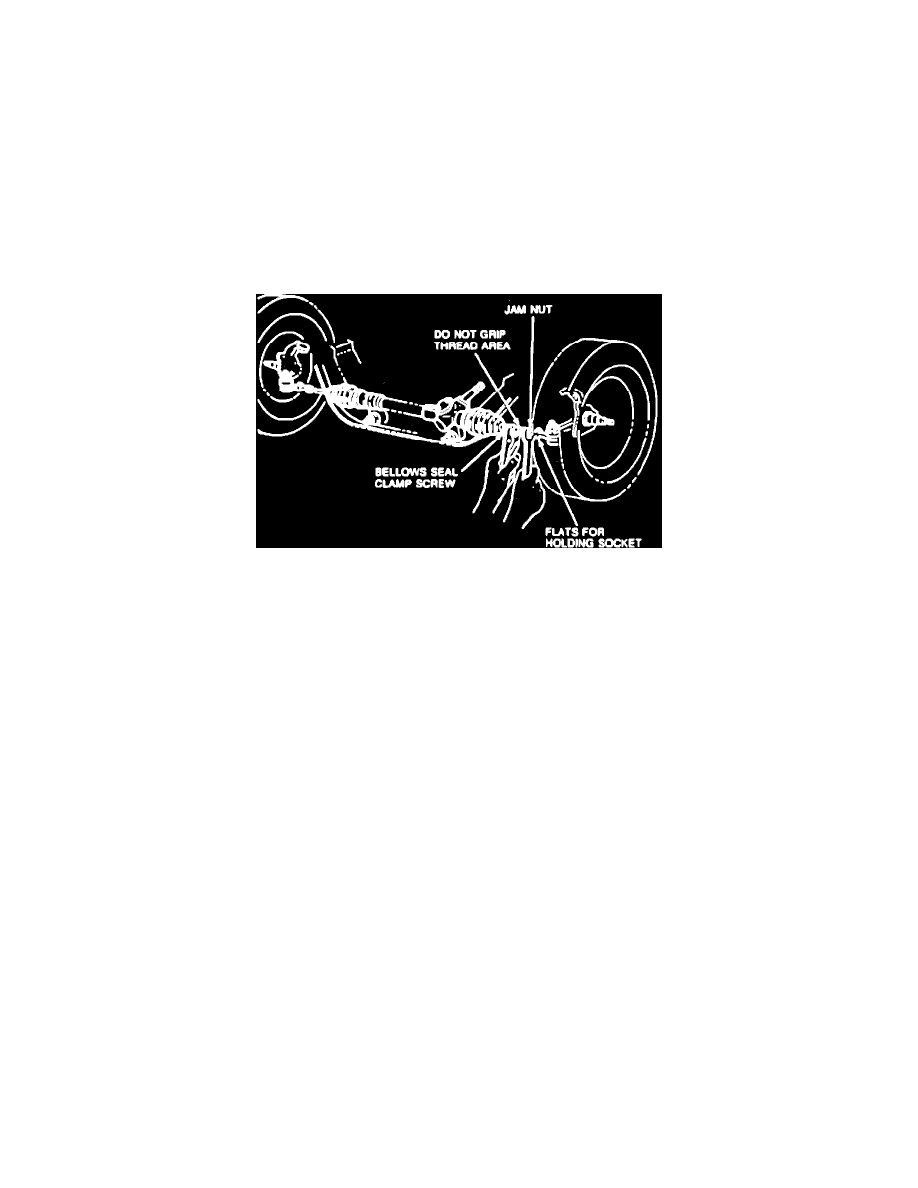Thunderbird V8-281 4.6L SOHC (1994)

Alignment: Service and Repair
FRONT CAMBER
Camber is adjusted by rotating a cam bolt at lower control arm inner pivot. Loosen nut securing adjustment and adjust by rotating bolt head. Lock
adjustment by holding bolt and torque nut to 125 ft lb.
FRONT CASTER
Caster is adjusted by moving the tension strut relative to the front sub-frame. Loosen nuts securing strut to sub-frame and adjust caster by running the
nuts in appropriate direction until desired setting is achieved. The setting should be locked by holding adjusting nut and torquing locknut to 117 ft lb.
FRONT TOE
1. Check to see that steering shaft and steering wheel marks are in alignment and in the top position.
Toe-in Adjustment
2. Loosen clamp screw on tie rod bellows and free the seal on the rod to prevent twisting of bellows.
3. Place opened end wrench on flats of tie rod socket to prevent socket from turning, then loosen tie rod jam nuts.
4. Use suitable pliers to turn tie rod inner end to correct the adjustment to specifications. Do not use pliers on tie rod threads. Turning to reduce
number of threads showing will increase toe-in. Turning in opposite direction will reduce toe-in.
5. Torque tie rod jam nuts to 43-50 ft lb.
REAR TOE
The recommended adjustment sequence for rear alignment is to set toe then
camber. Toe should be rechecked before final tightening. Toe is adjusted by rotating a cam bolt at lower arm inner pivot. Loosen nut securing adjustment
and adjust by rotating bolt head. Lock adjustment by holding bolt and torquing nut to 170 ft lb.
REAR CAMBER
Camber is adjusted by rotating a cam bolt at upper control arm inner pivot. Loosen nut securing adjustment and adjust by rotating head of bolt. Lock
adjustment by holding bolt and torquing nut to 98 ft lb.
